Postcards from Beijing
(Part Four)
The Forbidden City
Only five months after arriving in Beijing and I finally got round to visiting the number two tourist attraction (After the wall). The Forbidden City (or Gu Gong) is a large walled area immediately to the north of Tiananmen Square and I walked through Tiananmen (See Part One) to get there. Construction of the complex began in 1407 and was completed in 1420, and it was the home to twenty-four Ming and Qing emperors until the last emperor was evicted in 1924. Within the walls is a large number of courtyards and buildings, all well preserved. The northern part, or inner court, where the emperor lived with his family, is a labyrinth of small halls and courtyards, and every time I thought I'd seen them all I stepped through another tiled gateway to find another yard and another nicely decorated building. In the southern part, or outer court, are larger buildings and enormous paved areas.
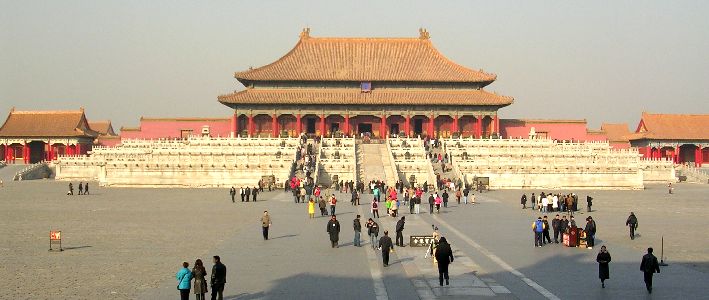
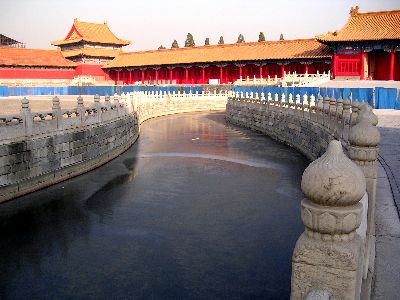
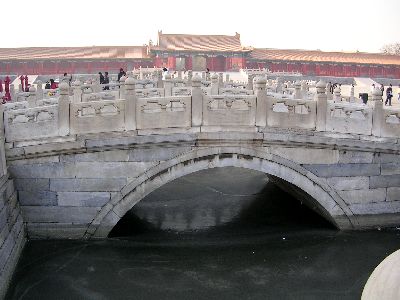
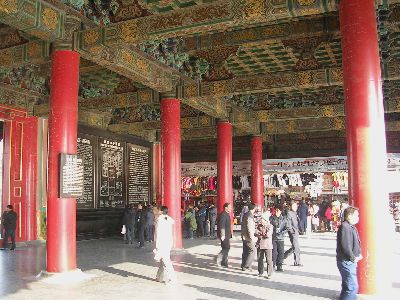
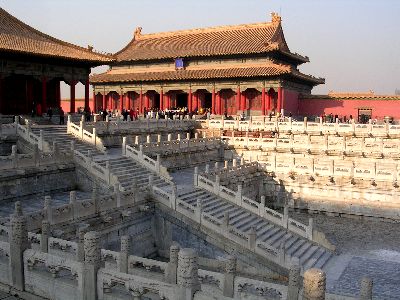
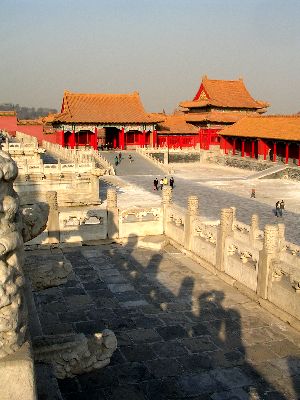
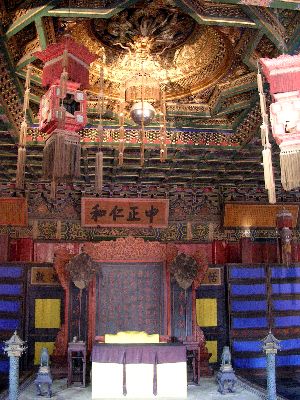
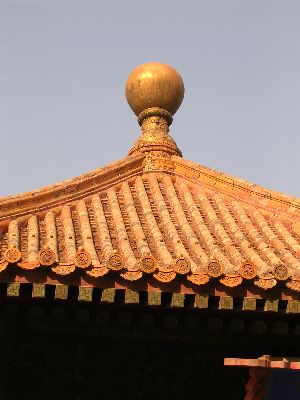

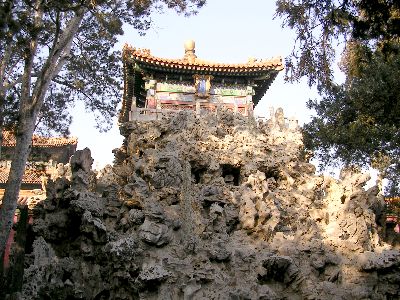
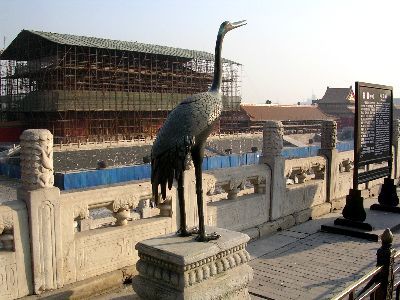

These copper and iron pots, found all over the Forbidden City, were for fire-fighting. They were wrapped in cloth to stop them freezing in winter and fires were lit under them in the coldest weather. (Any fire defence system that requires an open fire seems a bit un-wise to me!)
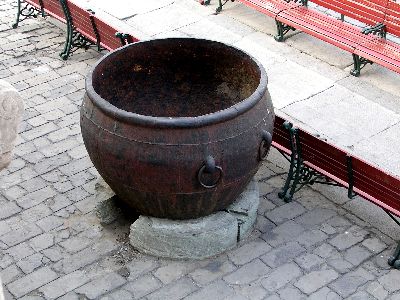
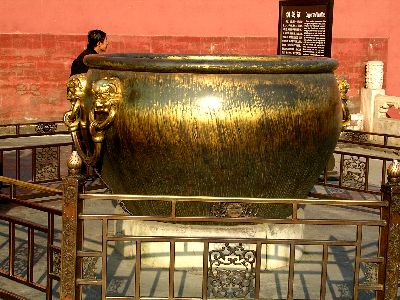
Although the scale of the world's largest palace complex is spectacular, it was the little details that impressed me: The carved stonework, the decoration on the buildings, and the ceramic roof tiles and wall panels.
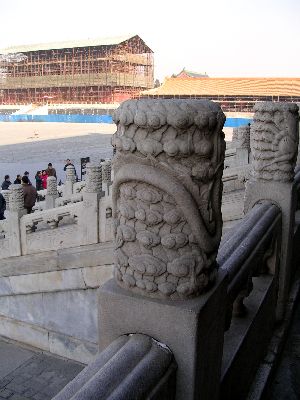
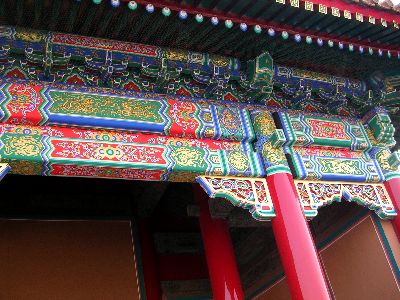
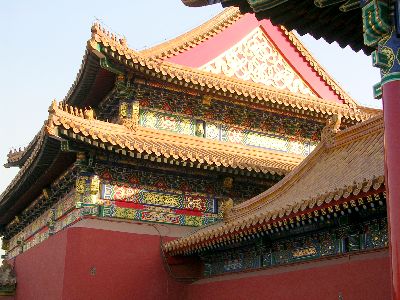
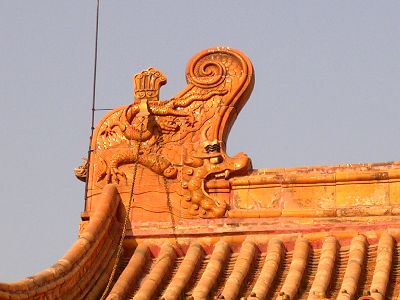
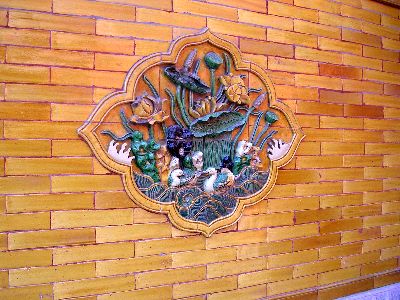
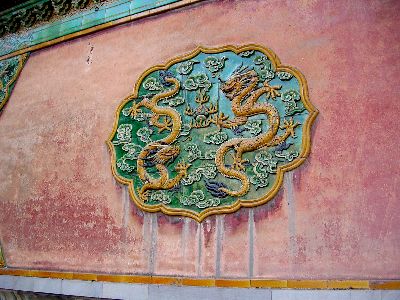
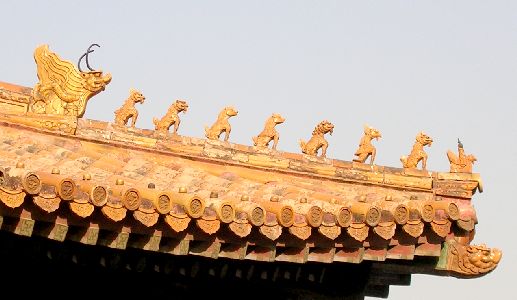
18 December 2005
Beihai Park
Just to the north-west of the Forbidden City is Beihai Park, supposedly built by Kublai Khan and much older than the Forbidden City. The park features a large artificial lake, the excavated earth was used to build an island.
The Round City on the edge of the park has a number of buildings enclosed in a circular wall. After one of the emperors enjoyed sitting under it on a sunny day, he honoured this tree with the title Marquis of Shade!
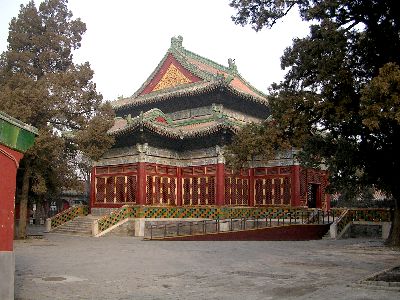
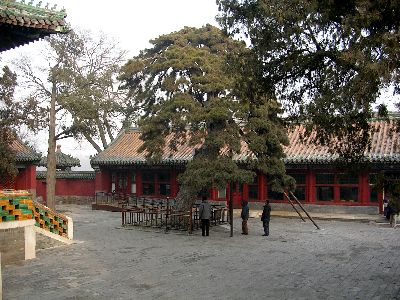
Two bridges provide access over the frozen lake to the island.
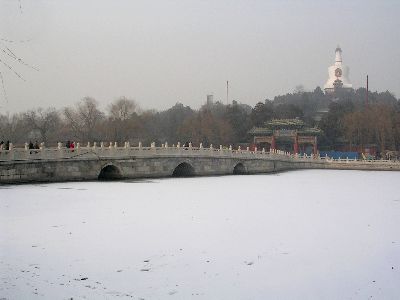
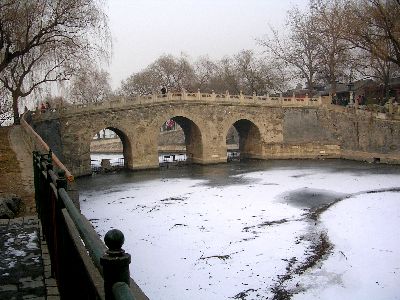
Following a theme recurring throughout my stay here, the buildings on the island were closed for refurbishment, so this is the best shot I could get of the white dagoba (A Bhuddist temple.)
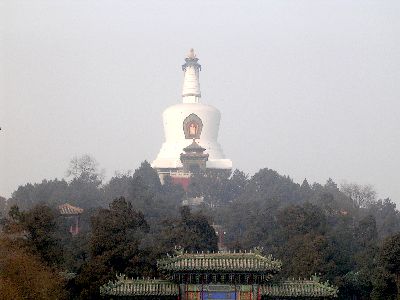
At the north end of the park are more historic buildings, including a number of impressive gates with ceramic decoration.
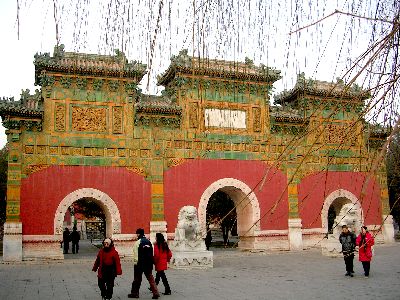
The Nine Dragon Screen is particluarly famous, and at 27m long it's a beautiful example of chinese ceramics.
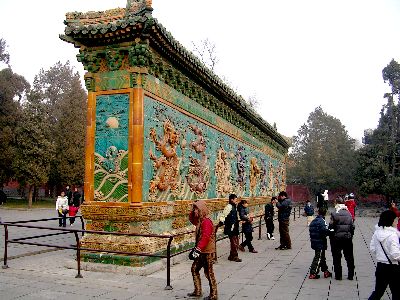
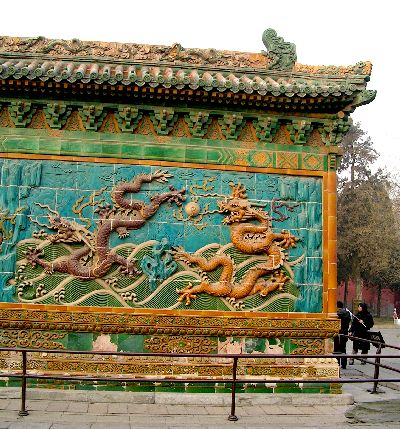
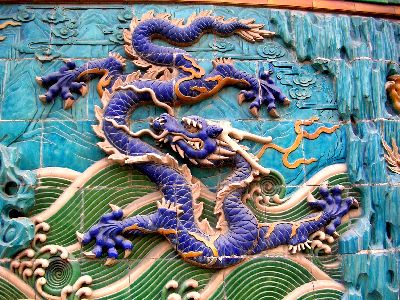
The five Dragon Pavilions are supposed to be in the shape of a dragon's spine. They are out in the lake, joined to the shore and each other by bridges.
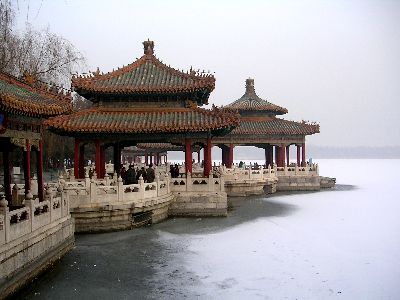
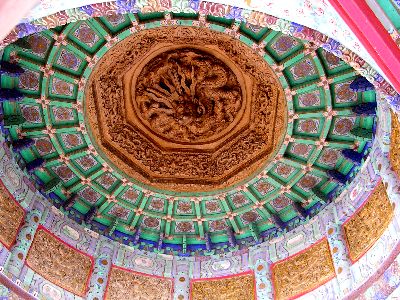
15 January 2006































